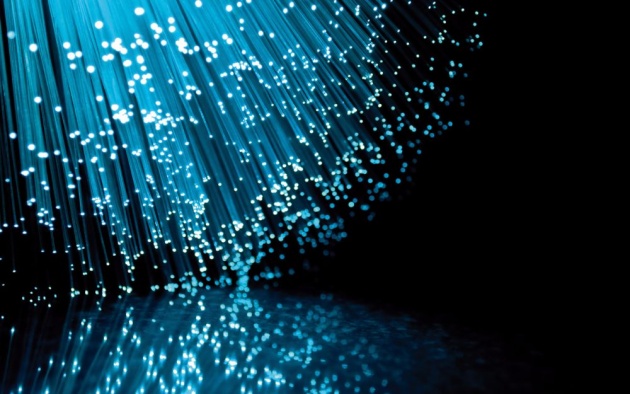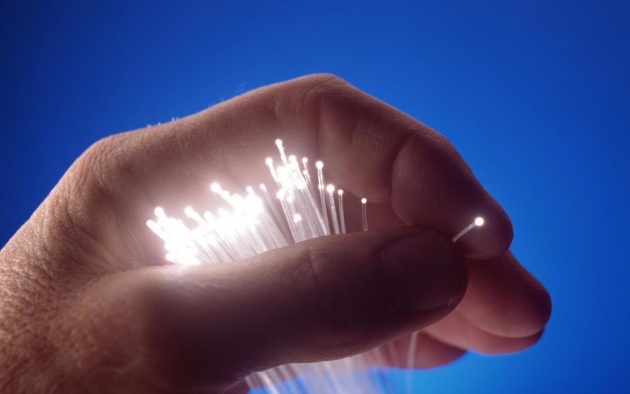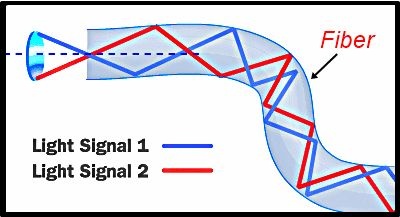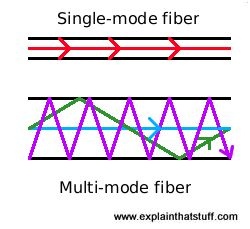Fiber Optics
Fiber optic lines are strands of glass or transparent fibers that allows the transmission of light and digital information over long distances. They are used for the telephone system, the cable TV system, the internet, medical imaging, and mechanical engineering inspection.

Optical fibers have many advantages over copper wires. They are less expensive, thinner, lightweight, and more flexible. They aren’t flammable since they use light signals instead of electric signals. Light signals from one fiber do not interfere with signals in nearby fibers, which means clearer TV reception or phone conversations.

Image Credit: Google Images.
Fiber optics are often long strands of very pure glass. They are very thin, about the size of a human hair. Hundreds to thousands of them are arranged in bundles (optical cables) that can transmit light great distances. There are three main parts to an optical fiber:
- Core- the thin glass center where light travels.
- Cladding- optical material (with a lower index of refraction than the core) that surrounds the core that reflects light back into the core.
- Buffer Coating- plastic coating on the outside of an optical fiber to protect it from damage.

>>>>Light travels through the core of a fiber optic by continually reflecting off of the cladding. Due to total internal reflection, the cladding does not absorb any of the light, allowing the light to travel over great distances. Some of the light signal will degrade over time due to impurities in the glass.

There are two types of optical fibers:
- Single-mode fibers- transmit one signal per fiber (used in cable TV and telephones).
- Multi-mode fibers- transmit multiple signals per fiber (used in computer networks).

Image Source: http://cdn4.explainthatstuff.com/fiberoptics.gif
Video Source: www.youtube.com/watch?v=PeJP0zwp4cU
Reference(s):
http://www.usd116.org/lbeuschlein/physics/powerpoint/optics.ppt



